CAESPITOSUM (Cavanilles) DC, 1928
Synonyms :
Crassula caespitosa Cavanilles (1791) / Sedum rubens ssp. caespitosum (Cavanilles) Bonnier & Layens (s.a.) / Aithales caespitosa (Cavanilles) Webb (1849)
Tillaea rubra L. (1753) / Sedum rubrum (L.) Thellung (1912)
Crassula magnolii DC (1808) / Procrassula magnolii (DC) Grisebach (1843)
Sedum deserti-hungarici Simonkai (1890)
Sedum rubrum var. louisii J.Thiébaut & Gombault (1934) / Sedum louisii ( J.Thiébaut & Gombault) Fröderström (1936)
Distribution : South-western, southern and south-eastern Europe (Portugal to Ukraine, Balkans), N Africa, W Turkey, N Syria, Iran; temporarily wet places, from sea-level to over 1000 m.
Description (according to 't Hart & Bleij in IHSP, 2003) :
Small, almost completely glabrous annual herbs with erect or ascending, sometimes branched stems, 2 – 6 (-9) cm tall.
Leaves alternate, ovate or broadly elliptic to obovate, sessile with a very small spur, obtuse, terete or semiterete, 2,5 – 5 mm.
Inflorescences few-flowered cymes with 1 – 3 cincinni, sometimes 1–flowered, bracts 1 or 2 per flower, leaf-like, 3 – 4 mm, pedicels short.
Flowers 4- or 5-merous, with 4 or 5 stamens, sepals broadly sessile, basally slightly connate, triangular, acute, ± 1 mm, petals free, narrowly elliptic to lanceolate, acuminate, white with a green or red keel, sometimes reddish, 2,5 – 4 mm, filaments white, anthers red or yellowish.
Cytology : 2n = 12, 24.
Winter-growing annual, almost always spent by Easter time. Reported from near Syrian border to Portugal.
N Greece :
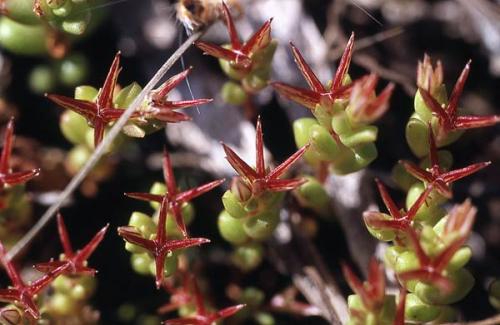
A bigger form from the Marseilles area :
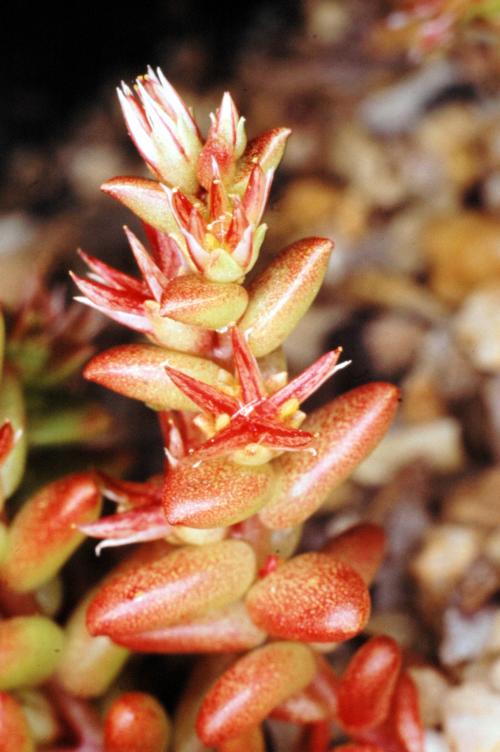
In Spain :
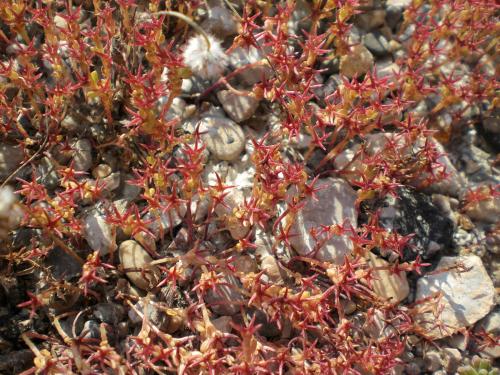
In Macedonia :
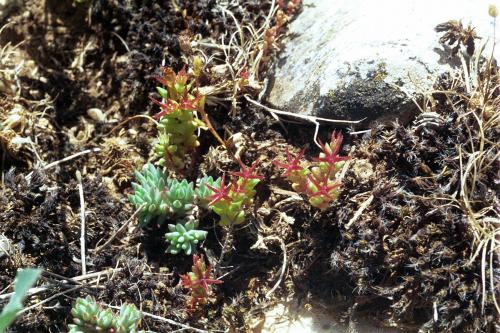
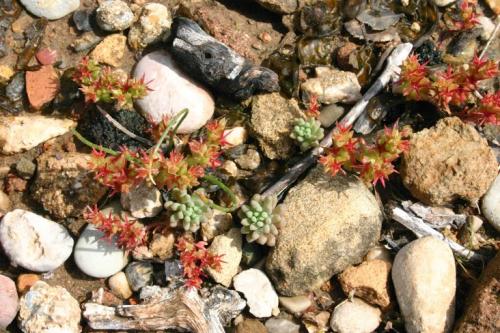
Photo Thomas Berndt